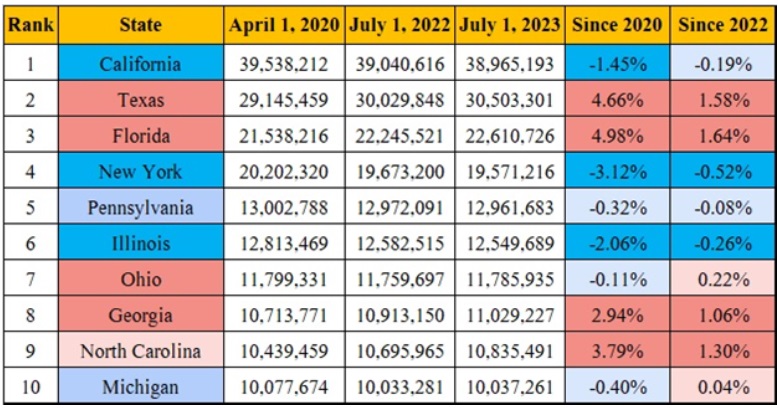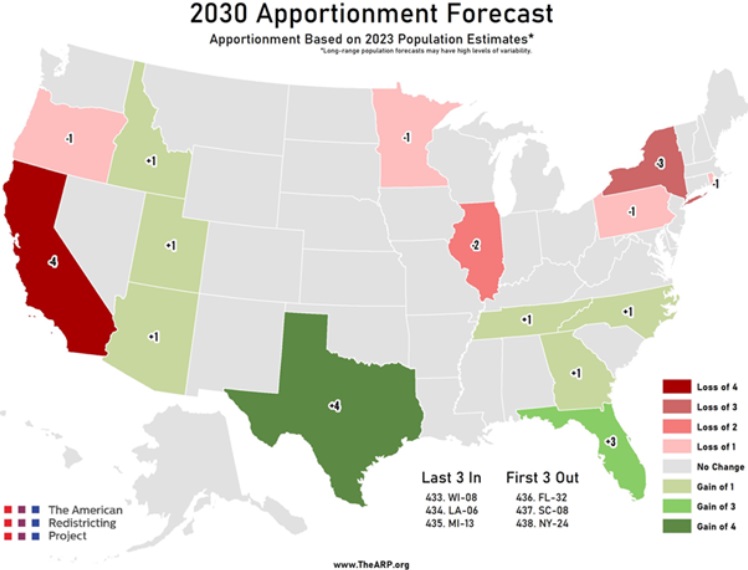Time for the final segment of my five-part series for 2023 on blue-to-red tax migration (previous versions here, here, here, and here).
We’ll start with this table showing what has happened in America’s 10-largest states.

You should notice a pattern.
The table comes from a column for National Review written by Dan McLaughlin. He explains what these numbers mean.
The Census Bureau has announced its year-end estimates of state population changes… They once again show the continuing trend of America’s population shifting out of its bluest states and into red states… The biggest boom states in the past year? In terms of raw numbers, Texas and Florida dwarf everyone else, followed by North Carolina and Georgia… In percentage terms, South Carolina was the biggest winner… Eight states lost population. New York was by far the biggest loser, dropping over 100,000 people, 0.5 percent of its population in a single year. Five of the eight states have been governed by Democratic trifectas for this entire decade.
The Wall Street Journal editorialized a few days ago about this internal migration. Here are some excerpts.
The U.S. population increased by 1.6 million between July 2022 and July 2023, with states in the South accounting for about 1.4 million of the growth. Leading the boom were Texas (473,453), Florida (365,205)… Eight states saw population declines, with the biggest in New York (-101,984), California (-75,423) and Illinois (-32,826). …what these states have in common: High taxes, burdensome business regulation and inflated energy and housing prices. ….An interesting natural experiment has been Washington state, which gained tens of thousands of people from other states on net each year in the last decade. But since enacting a 7% capital-gains tax on higher earners in 2021, Washington has been losing residents to other states at an accelerating pace—15,276 this past year. …A big problem for Democratic-run states is that their affluent residents are leading the exodus, and they pay the majority of income tax that supports their expansive welfare programs.
By the way, the WSJ‘s editorial explains that there are political implication of America’s internal migration.
State migration has long-tail political consequences. California, New York, Illinois, Minnesota and Rhode Island and Oregon on present trend would lose a combined 12 House seats in the 2030 reapportionment, which is as many as Florida, Georgia, Texas, Tennessee, North Carolina, Utah and Idaho would collectively gain.
And the National Review column includes a map for those of us who like visuals.

I’ll close by noting that blue states aren’t just losing political power. They’re also losing lots of taxable income.
P.S. I think taxes are a major factor in driving internal migration, but there are other factors as well (see here, here, here, here, and here).



